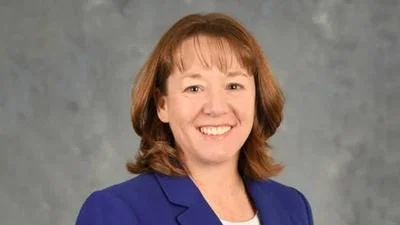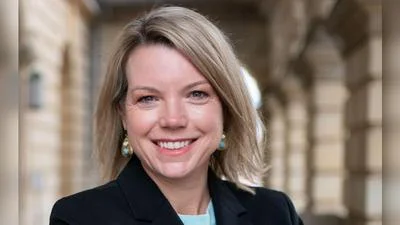State. Rep. Katie Stuart (D-Edwardsville) hopes voters forgive her for backing a Chicago Public Schools' bailout. | Youtube
State. Rep. Katie Stuart (D-Edwardsville) hopes voters forgive her for backing a Chicago Public Schools' bailout. | Youtube
State Representative Katie Stuart (D-Edwardsville) chafed at the criticism.
Then she lived up to it.
Her political opponents maligned Stuart as a puppet of powerful Illinois House Speaker Michael Madigan (D-Chicago), the main financial backer of her political career. She may represent Madison and St. Clair counties, they said, but she would inevitably do whatever Madigan and the Chicago machine wanted, even at the expense of her own district.
Stuart insisted she wouldn't. Then she did, delivering a critical “yes” vote last summer for a state record bailout of Chicago Public Schools (CPS), shifting billions of state funding from Southern Illinois districts to schools in Madigan's insolvent home district.
It was support Madigan needed.
Despite receiving among the largest state taxpayer subsidies of any district in the state, CPS had run completely out of cash and had amassed a staggering $18 billion in debt, or more than three times its annual budget. Chicago school administrators were threatening not to open.
For the Metro East taxpayers asked to foot the bill-- taxpayers who already pay higher property tax rates than Chicago to support their own schools-- the bailout proved a bitter pill to swallow.
“It puts Chicago ahead of our communities," said Dwight Kay of Glen Carbon, the Republican challenger to Stuart for her 112th District seat. "People are disgusted with it and they think it’s wrong. All the bailout money we keep pumping into CPS is not resonating here."
Illinois’ 112th House District includes Bethalto, Caseyville, Fairmont City, Glen Carbon, Maryville, Pontoon Beach, Roxana, Shiloh and Swansea.
Poorer districts subsidize the rich
In Springfield, the idea of less wealthy downstate and suburban taxpayers bailing out CPS didn't have broad support.
And how could it? CPS already spent 70 percent more than the richest Metro East district last year-- $17,404 per student, versus $10,761 at Edwardsville CUSD 7.
Even State Rep. Stuart herself said she didn't support a CPS bailout, telling the Illinois News Network that "people in my district have overwhelmingly told me that they don't support that."
But four weeks later, Madigan asked and Stuart voted for it.
Madigan-supported Downstate and suburban legislators like Stuart proved the difference, voting for a bill Chicago Mayor Rahm Emanuel called his top priority in 2017.
In return, they would receive Madigan's continued support for re-election this year.
16 consecutive blown budgets
Critics said a state bailout would reward financially irresponsible behavior by CPS leaders, and that the district should learn live within its means.
To be sure, it has been a while.
An analysis by Local Government Information Services (LGIS), which publishes the Metro East Sun, found that CPS had run 15 consecutive operating deficits between 2002 and 2016, overspending by $6.6 billion. And it ran another last year, blowing its budget by another $205 million.
All told, the district has received $77.5 billion in tax revenue since 2002— about half from Chicago taxpayers— but spent $84.2 billion over the period.
It has borrowed the difference, as well as another $10.9 billion by overpromising and not funding its insolvent teachers's pension fund, now on the verge of collapse. Now, when it does, state taxpayers -- not just Chicago's-- will be be responsible for funding its losses.






 Alerts Sign-up
Alerts Sign-up